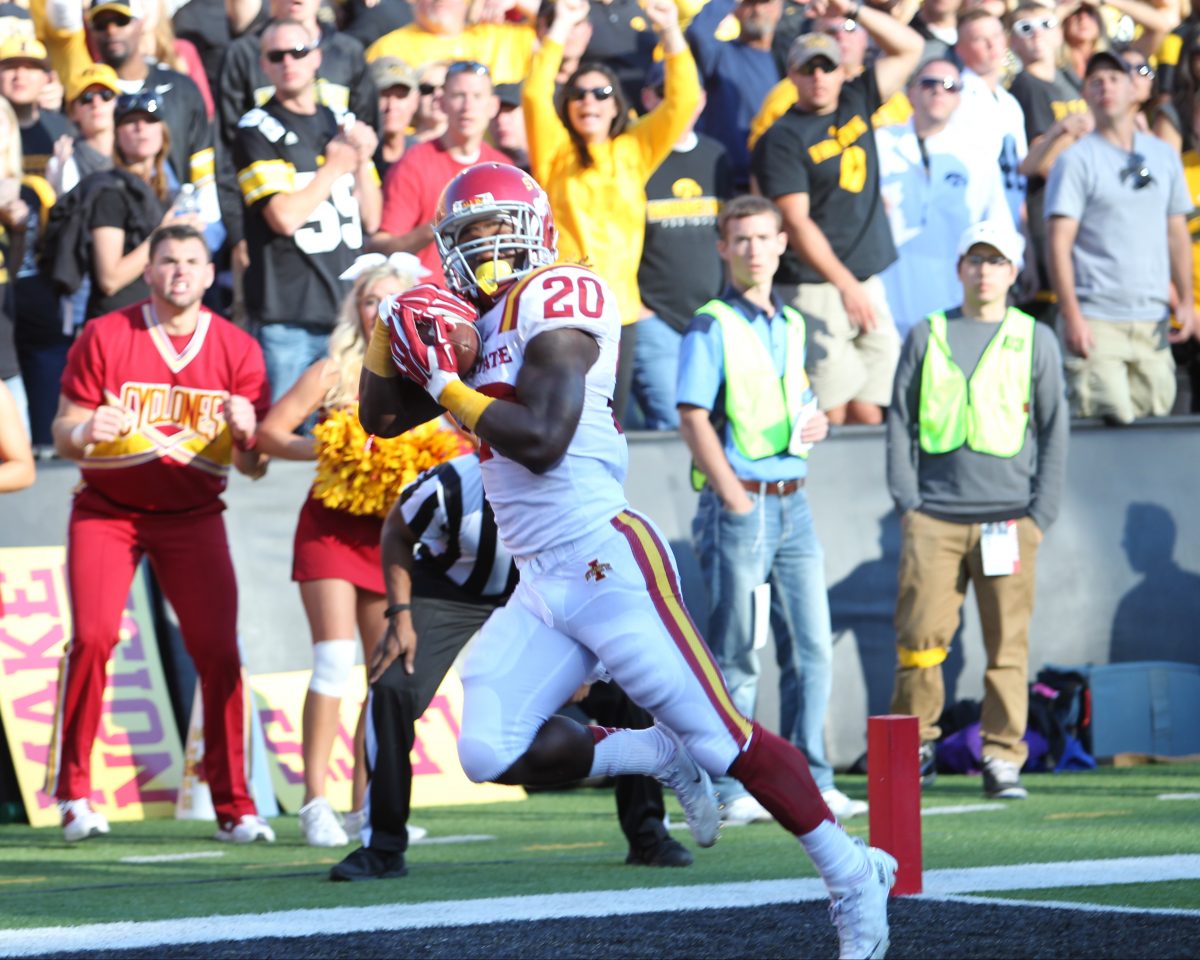It was the second quarter and the clock had just struck 11:26 remaining before halftime. For the previous 18:34 of the game, the Oklahoma Sooners had more or less completely dominated an undermanned and less talented Cyclone team.
Looking to continue that trend while boasting a 21-7 lead and facing a 4th & 1 situation from midfield, Bob Stoops chose to go for it. It wasn’t exactly a risky proposition for a Sooner offense that averaged more than eight yards per carry at the end of the day; especially when the Sooner defense kept the Cyclones from almost any success by the end of the game.
So the Sooners turned and handed off to Perine who was promptly met and dropped by T.J. Mutcherson behind the line of scrimmage for a two yard loss.
With that stop, the Cyclones had just halted momentum in a game where they trailed by two scores and had a chance to at least hang around a little bit longer. They had successfully stopped momentum but now, could they swing it in their favor?
As Sam Richardson came trotting out to start the drive from Oklahoma’s 48 yard line with the wind at his back, I tweeted:
“Throw. It. Deep. Now.”
Any response that I received off of that was positive and in agreement which isn’t a surprise. The conventional wisdom is almost always to try and snowball any momentum that can be gathered throughout a game. That is most often realized after forcing a turnover or getting a huge stop on a fourth down.
Instead, we saw a DeVondrick Nealy rush up the middle for no gain on first down followed by a Sam Richardson rush for no gain on second down. Third down was an unsurprising incomplete pass and the Cyclones punted the ball away and their proverbial hopes to make the game interesting.
But, the circumstances left me wondering. What is the FBS norm for the next play after a huge play? How often does the offense swing for the fence and hit a home run?
So far this season after turnovers and stops on fourth down on the immediate play following, the Cyclone offense averages 7.61 yards per play. That is the 37th highest in the country and obviously not a bad number for the ISU offense. (The leader in the clubhouse is Marshall at 14.17 yards per play and the median is Florida/Washington at 5.95 yards per play.)
As I’ve mentioned before, averages can be a bit iffy because of how data can be skewed with a few huge gains, especially in an example like this where the total number of plays ran in these situations averages out to about 21.8 plays per team so far in the 2014 season. But hey, it’s the best and easiest method we’ve got.
But how frequently are home runs actually hit? Louisiana-Monroe tops the charts in cases where the very next play for their offense after a turnover is a touchdown with 12.5 percent of their plays hitting pay dirt (with two touchdowns immediately following a turnover). The Cyclones have yet to connect for a touchdown on the first play following a turnover this season but only 41 teams have.
While Iowa State isn’t a team pacing college football in capitalizing on the immediate momentum of the season, they are above average. Of course, that doesn’t make the play calling immediately following the defensive stand any less curious.
While at times it seem like Paul Rhoads isn’t the same guy as he was in 2009 with the constant tossing of caution to the wind (a shift that is expected as a coach’s tenure increases,) there are other times where he calls a fake punt that was perfectly executed except for the catch. The aggressiveness of Rhoads isn’t the same as five years ago but it isn’t all that different either.
All things considered, the ISU offense is comparatively doing pretty well with big gains immediately taking possession after a turnover.





